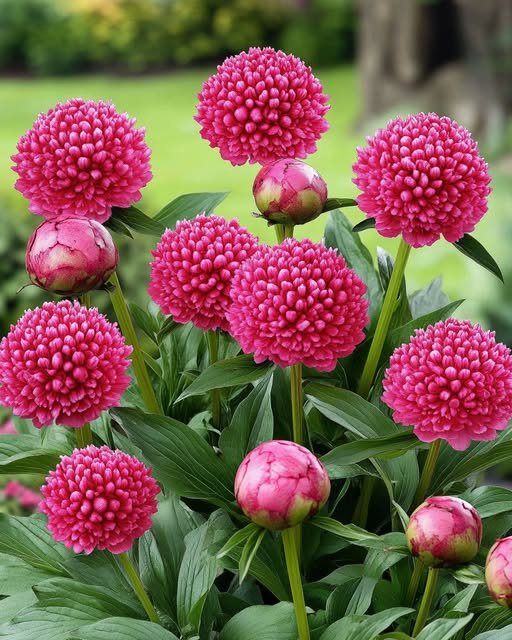Peonies are a beloved staple in many gardens, known for their lush, full blooms and delightful fragrance. These perennial favorites can transform any garden into a vibrant display of color and texture. However, achieving those picture-perfect peony blooms year after year requires more than just planting and waiting. Understanding the intricacies of peony care can make all the difference in ensuring your plants thrive.
For gardeners looking to enhance their peony blooms, there are specific techniques and tricks that can help. From selecting the right varieties to understanding soil and sunlight needs, each step plays a crucial role in the health and vitality of your peonies. In this article, we’ll explore a gardener’s secret trick to achieving fuller peony blooms and provide a comprehensive guide to peony care.
1. Understanding the Beauty of Peonies
Peonies are renowned for their large, showy blooms that can range from soft pastels to vibrant hues. These flowers can grow up to 10 inches in diameter, making them a standout feature in any garden. The beauty of peonies lies not only in their size but also in their intricate petal arrangements, which can be single, semi-double, or fully double.
Peonies are also known for their longevity. Once established, a peony plant can bloom for decades, often outliving the gardener who planted it. This makes them a worthwhile investment for anyone looking to create a lasting garden display.
2. The Common Challenges with Peony Blooms
Despite their beauty, peonies can present several challenges to gardeners. One common issue is bud blast, where buds fail to open. This can be caused by a variety of factors, including insufficient sunlight, poor soil nutrition, or overcrowding.
Another challenge is ensuring the plant has adequate support. Peony blooms are heavy, and without proper staking, the stems can bend or break, especially after rain. Additionally, peonies are susceptible to fungal diseases like botrytis blight, which can cause buds to rot and leaves to blacken.
3. The Secret Trick for Fuller Peony Blooms
The secret trick to achieving fuller peony blooms lies in a technique known as disbudding. This involves removing some of the smaller side buds on each stem, allowing the plant to direct more energy into developing the main bloom. By focusing the plant’s resources, you can encourage larger and more vibrant flowers.
To disbud, simply pinch off the smaller buds when they are about the size of a pea. This should be done in early spring, as soon as the buds are visible. While it may seem counterintuitive to remove potential flowers, this method has been proven to enhance the size and quality of the remaining blooms.
4. Preparing Your Garden for Peonies
Before planting peonies, it’s important to prepare your garden properly. Peonies prefer well-drained soil with a pH between 6.0 and 7.0. If your soil is heavy clay, consider amending it with compost or sand to improve drainage.
Choose a location that receives at least 6 hours of sunlight per day. Peonies need full sun to thrive, and too much shade can result in fewer blooms. Additionally, ensure there is adequate space between plants to allow for air circulation, which can help prevent fungal diseases.
5. Choosing the Right Peony Varieties
There are several types of peonies to choose from, including herbaceous, tree, and intersectional (Itoh) peonies. Herbaceous peonies are the most common and die back to the ground each winter. Tree peonies have woody stems and do not die back, while intersectional peonies are a hybrid of the two.
When selecting peony varieties, consider your climate and garden conditions. Some varieties are more heat-tolerant, while others are better suited for cooler climates. Popular varieties include ‘Sarah Bernhardt’, known for its large pink blooms, and ‘Karl Rosenfield’, which boasts deep red flowers.
6. The Importance of Soil and Sunlight
Peonies thrive in well-drained, fertile soil. It’s essential to plant them in a location that receives full sun, as insufficient sunlight can lead to weak stems and fewer blooms. If your garden soil is poor, consider adding organic matter such as compost or well-rotted manure to enrich it.
When planting peonies, ensure the eyes (buds) are no more than 2 inches below the soil surface. Planting too deep can inhibit blooming. Additionally, avoid planting peonies in areas where they will be shaded by trees or large shrubs.
7. Watering Techniques for Optimal Growth
Proper watering is crucial for peony health. While peonies are relatively drought-tolerant once established, they require consistent moisture during their first year. Water deeply once a week, providing about 1 inch of water each time.
Avoid overhead watering, as wet foliage can encourage fungal diseases. Instead, water at the base of the plant and use mulch to help retain soil moisture and regulate temperature.
8. Pruning and Maintenance Tips
Pruning is an important part of peony care. After the blooms have faded, deadhead the flowers to prevent seed formation, which can sap the plant’s energy. In the fall, cut back the foliage to ground level to prevent disease and prepare the plant for winter dormancy.
Regular maintenance also includes dividing the plants every 10-15 years to rejuvenate them. This should be done in the fall, after the foliage has died back. Carefully dig up the plant, divide the root clump, and replant the divisions with at least 3-5 eyes each.
9. Dealing with Pests and Diseases
Peonies are generally hardy plants, but they can be affected by pests such as aphids and thrips. These insects can be controlled with insecticidal soap or neem oil. For fungal diseases like botrytis blight, ensure proper spacing and air circulation, and remove any affected plant material immediately.
Regularly inspect your plants for signs of disease or pest activity. Early detection and intervention are key to maintaining healthy peonies.
10. Seasonal Care for Year-Round Blooms
Seasonal care is essential for ensuring peonies bloom year after year. In the spring, apply a balanced fertilizer to support new growth. During the growing season, monitor for pests and diseases, and water as needed.
In the fall, prepare your peonies for winter by cutting back the foliage and applying a layer of mulch to protect the roots from freezing temperatures. In colder climates, additional protection such as a burlap wrap may be necessary.
11. Expert Insights and Testimonials
Experienced gardeners often share that patience and attention to detail are key when growing peonies. ‘I’ve been growing peonies for over 20 years, and the disbudding technique has made a noticeable difference in my blooms,’ says Jane Doe, a master gardener from Oregon.
Another gardener, John Smith, emphasizes the importance of soil preparation: ‘I always make sure my soil is well-drained and rich in organic matter. It really helps my peonies thrive.’ These insights highlight the importance of combining traditional gardening wisdom with specific techniques for optimal results.



